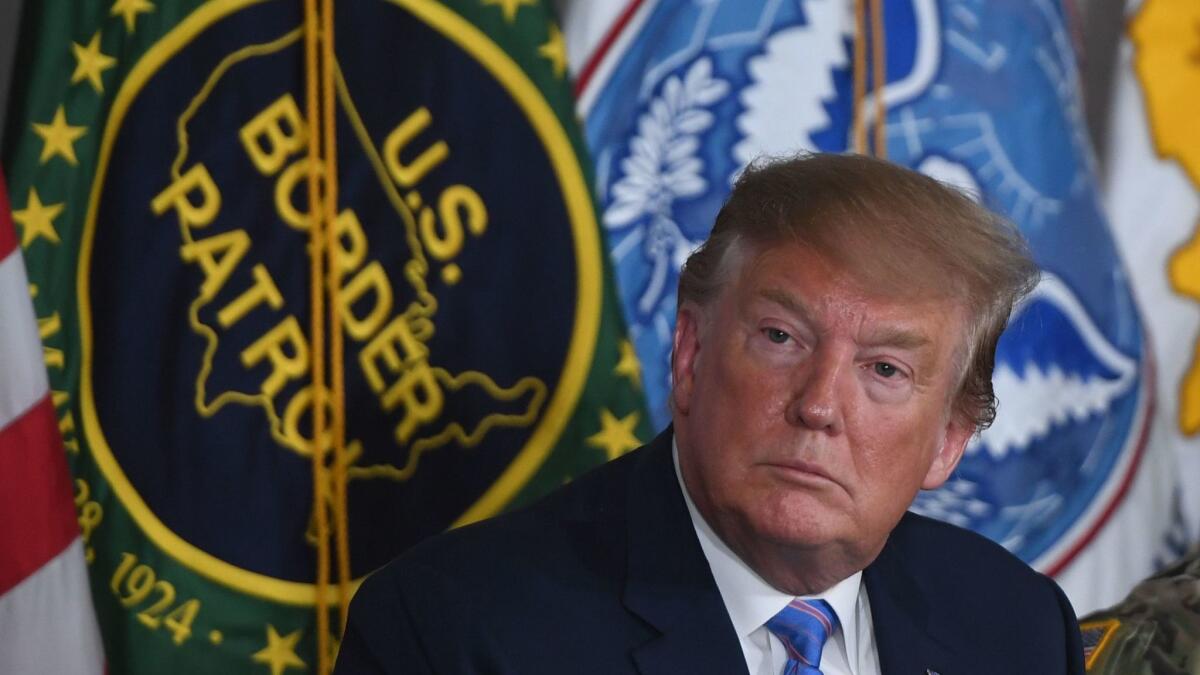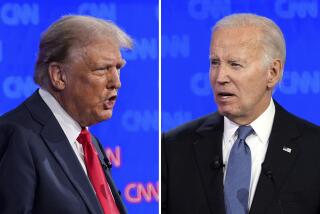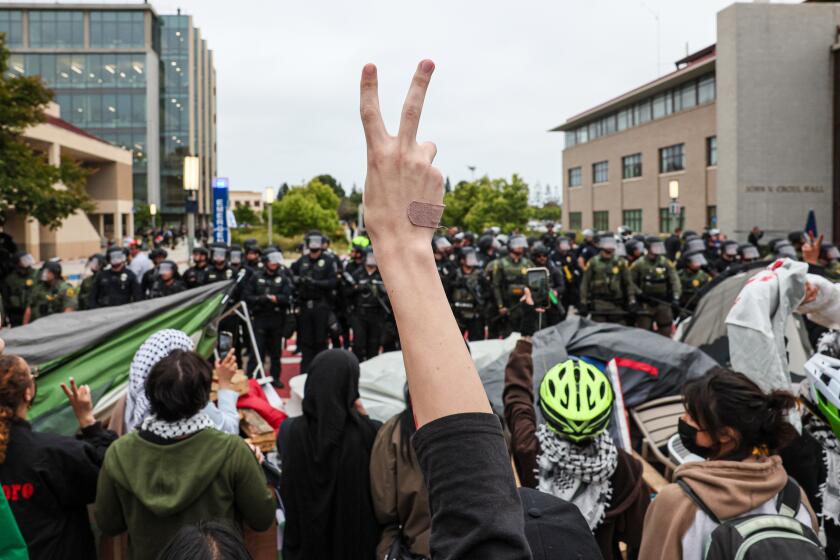Judges appear skeptical of Trump’s plan to force asylum seekers to wait in Mexico

A federal appeals court appeared skeptical Wednesday of the legality of a new Trump administration policy that requires some asylum seekers to wait in Mexico while the U.S. considers their applications.
During an hourlong hearing, a three-judge panel of the U.S. 9th Circuit Court of Appeals wrestled with technicalities in an immigration law, parsing the wording section by section and grilling both sides on what the words meant.
The Trump administration announced its unprecedented plan in January, and a federal judge in San Francisco tried to block it in early April.
The 9th Circuit panel put the lower court’s injunction on hold until it had more time to consider the case. Two of the judges on the panel appeared troubled by the new rule Wednesday, and one seemed supportive.
Judge Diarmuid O’Scannlain, appointed by President Reagan, asked why asylum seekers would prefer to be in a detention center in the U.S. than in Mexico.
“Why would they want that?” he asked.
Judy Rabinovitz, deputy director of the ACLU’s Immigrants’ Rights Project, said that those who have sued to invalidate the new policy understood they could be subject to detention in the U.S. but preferred that to remaining in Mexico.
“Why would they want it?” she asked. “Because it is so dangerous in Mexico.”
Judge Paul J. Watford, an appointee of President Obama, questioned how the government could return people to Mexico without first asking them if they had a fear of being there.
“I just don’t see how that is not arbitrary and capricious,” he said.
Deputy Assistant Atty. Gen. Scott G. Stewart said the applicants can volunteer that they fear for their safety in Mexico.
“The system itself puts the burden on the applicant,” he said.
When Watford continued to express incredulity, Stewart suggested the court could require the question to be asked and still allow the program to go forward.
Watford also asked how the court should frame a decision if it supported only some of the legal reasoning behind the injunction.
Judge William A. Fletcher, appointed by President Clinton, flatly disagreed with how the federal government was parsing the meaning of the law.
The panel’s decision to put a hold on the injunction pending written arguments marked a rare victory for Trump in the 9th Circuit.
Administration officials have argued that the new policy was needed because many asylum seekers disappear into U.S. society and fail to show up for their immigration hearings. The vast majority of asylum requests are denied.
Several immigrant rights groups challenged the policy, arguing that it endangered asylum seekers.
U.S. District Judge Richard Seeborg, who is based in San Francisco, ordered the nationwide injunction but gave the government five days to appeal.
Seeborg said the policy violated federal law because officials failed to evaluate dangers that migrants might face in Mexico.
The new policy was first enforced at the San Ysidro Port of Entry in California but later extended to entries in Calexico and El Paso. Seeborg said the government would extend it further unless stopped.
Hundreds of migrants, mostly from Central America, have been returned to Mexico under the program. The government stopped the returns after Seeborg’s ruling and reinstated them when the 9th Circuit issued a temporary stay.
The administration argues its policy will weed out weak asylum cases and ease a backlog of 800,000 immigration cases awaiting decision.
More to Read
Sign up for Essential California
The most important California stories and recommendations in your inbox every morning.
You may occasionally receive promotional content from the Los Angeles Times.











